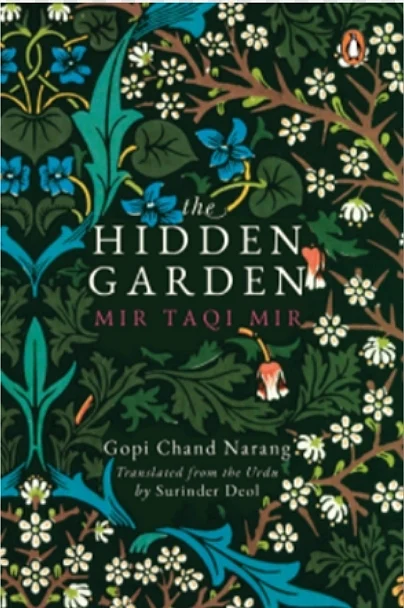Rediscovering Mir Taqi Mir, the ‘God of Urdu poetry’
Ahead of the 300th birth anniversary of Mir Taqi Mir (1723-1810) in 2023, Gopichand Narang discusses the importance of the poet and his work in understanding Delhi and those turbulent times

"Just as we cannot fully comprehend the tragic events of 1857 without going through Ghalib's letters, we cannot fully appreciate the magnitude of the pillage and plunder during the invasions of Nadir Shah (1739) and Ahmad Shah Abdali (from 1747 onwards) or the infighting between Jats, Marhatas, Rohellas and others without going into the soul of Mir's verse and his life," says Gopichand Narang, who has come out with a new book The Hidden Garden ahead of the 300th anniversary in 2023 of one of the principal poets of the Delhi School of Urdu ghazals.
Mir is hailed not only as Urdu's first great poet but also the most prolific one with around 13,500 couplets to his name. He is counted among the five major poets of the language along with Mirza Ghalib, Mir Anees Allama Iqbal and Josh Malihabadi and is often mentioned as 'Khuda-e-Sukhan' (God of Posey or poetry).
"Mir's story is not just his own story, it is a testament to the miseries suffered by Delhi as a city and by its residents. It is a story of the river of fire he had to wade through to survive in those times: 'Ujre nagar mein jaise jale hai charagh ek' (in a pillaged town engulfed in darkness shines a distant tiny lamp somewhere).
He is a poet of agony and suffering as well as courage and audacity,” says Narang before adding, “Mir's poetry is relevant in today's troubled world, the world shattered by the Covid-19 and economic uncertainties." Narang said.
But Mir is also grossly misunderstood outside the academic world, says Narang, who in 1984 had delivered a scholarly paper on Mir's poetry at a memorial lecture in Karachi that was ultimately published as a book titled "Usloobiyaat-e Mir" in 1985.
"Over time, I felt the need to bring my research findings about Mir to a wider non-academic audience," says the 90-year-old Narang. The book has been written so that an ordinary reader can learn about Mir's life and enjoy his riveting verse,” he contends. Written in Urdu and translated by Narang's long-time associate Surinder Deol, the book has been published by Penguin/Viking.
Recalling his research he says, "My immediate reaction was both shock and surprise. There were two popular misgivings about Mir’s poetry. First that Mir's high was really high, but his low was almost like trash; that the good part was therefore limited to only seventy-two nishtars (lancets). Also, if you had read those seventy-two nishtars, there was no need for you to go any further.” This, he believes, was a wrong assessment.
"Second, it was mentioned that Mir's poetry was too simple to gain any critical appreciation. This was also wrong because Mir's 'simplicity' has layers of complexity. He preferred the language that people spoke in Agra, Delhi, and Lucknow. But within that apparent simplicity of language, he inducted the complexity of his thought-forms,”.
"He is like a candle that burns and melts continuously. Mir is not only a poet of unrequited love; his voice reveals and recreates echoes of the medieval age's soul-touching transcendental thought of the bhakti tradition and spirituality," Narang explains.
Follow us on: Facebook, Twitter, Google News, Instagram
Join our official telegram channel (@nationalherald) and stay updated with the latest headlines
